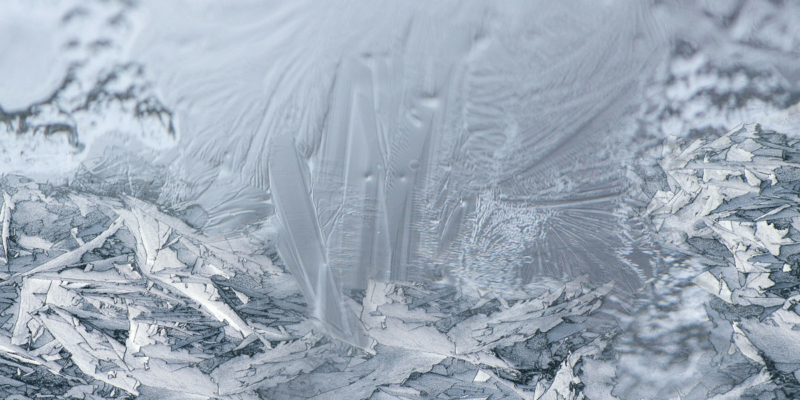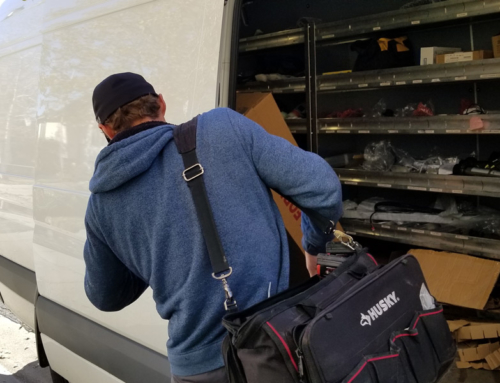2018 is shaping up to have one of the coldest winters on record across the country. For hot tub service technicians, the frigid temperatures pose an additional challenge. Fortunately, Bart Plante, Director of Technical and Warranty Services at Bullfrog Spas has shared a few helpful cold weather tips to ensure service calls run smoothly. Here are the 10 tips all service technicians need to know before taking on any wintertime job.
1. Establish a Temperature Threshold
Winter service calls require more preparation than warm weather jobs, which includes keeping an eye on the weather. If the temperature drops too low, work is simply not possible. Your service department should establish a temperature threshold, below which no work can be done. Typically, this will be around 0°F or just slightly below. Any colder, and you risk freezing the standing water in the exposed lines, creating ice jams and other headaches throughout the system.
Though you want to meet your clients’ demands, at the end of the day, it’s more convenient to reschedule on a warmer day than it is to thaw and repair a frozen spa.
2. Bring a Heat Gun or Blow Dryer
A low-power heat gun or a basic blow dryer is an invaluable tool during cold weather service calls. When the temperature drops below freezing, standing water can turn to ice in minutes, especially in small diameter plumbing. A hairdryer can thaw those lines quickly and keep them warm throughout the draining and refilling process.
A low-power heat gun or a basic blow dryer is an invaluable tool during cold weather service calls.
If you’re using a heat gun, be sure to be careful. Keep it on the lowest setting and avoid direct contact with spa components. Too much heat can cause parts to melt. If in doubt, opt for the blow dryer.
3. Check for Blockages and Ice Jams
Ice often accumulates in the low points of a spa system, where standing water collects. If the heating pump has not been in use during the cold season, more likely than not, you have an ice jam in the discharge hose, the lowest point in the system. Before firing up the pump or draining the tub, inspect thoroughly for blockages and use your trusty blow dryer to free up the lines. If icing is severe, your tech should use blankets and space heaters begin thawing and plan to return later in the week.
4. Ensure the Customer’s Hose Is Functional
Before arriving on site, check with the clients to ensure that their hose connection is functioning. Once you’ve drained the tub, you don’t want to discover that the spigot is frozen. Frozen pipes need time to thaw, especially if they’re in-ground. Be sure to call ahead, at least a week prior, and tell the customer to take the necessary steps to ensure hoses and taps stay above freezing.
Hoses should be stored indoors when not in use. Additionally, the customer should turn off the hose connection and purge any standing water. When it comes time to refill the hot tub, simply turn the flow of water back on.
5. Warm up the Doghouse
Every technician should bring a service light or low-power space heater to all cold weather jobs. During the initial diagnostic visit, open up the heating compartment and check for ice. Most of the small lines run through the heater element and are prime for freezing. To ensure your service call goes off without a hitch, leave a small space heater or 100 W service light a few days prior and place a heavy blanket over the door. This will thaw any residual ice buildup in the doghouse and allow you to run the heater safely.
If using a service light, do not exceed 100 W; any higher and the bulb can cause plastic to melt.
Be mindful when placing the light not to set it close to wires or other components that melt easily. Additionally, if using a service light, do not exceed 100 W; any higher and the bulb can cause plastic to melt.
6. Carry the Appropriate Spare Parts
If the heater is not functioning, visual and electrical inspection should be performed. All service technicians should carry a backup heater tube to every job. If it turns out the heater has failed, you have a spare on hand and can swap it in quickly.
7. Do Not Drain If Heater Has Failed
If you discover that the heater is running but fails to produce heat, leave it running until you can secure a replacement. The motors produce enough heat to keep the spa warm, so it will not freeze. Most modern hot tubs also have anti-freeze protection built into the system, which works so long as water is pumping through the lines. Turn off the pumps, then freezing occurs. Like leaving the faucet running in an empty house, moving cold water through the heater prevents ice buildup. Most importantly, never drain the spa.
8. Warm Tape To Remove Residue
In cold weather, tape adhesive hardens and becomes ineffective. Additionally, cold tape can leave its residue on surfaces. If you’re delivering a hot tub in the wintertime, don’t forget to warm up the tape with a blow dryer (there it is again!) before unwrapping. As you heat up the tape, the adhesive becomes tackier and sticks to the tape instead of the hot tub. If some residue does remain, use an adhesive solvent such as WD40 or Goo Gone to remove it.
9. Establish Effective Drainage
In the case that you must drain the spa for repair, you need to act fast and efficiently when changing the water on a frigid day. Furthermore, you need to ensure you have an effective drainage line. In the summertime, it might be alright to let the water puddle out onto the ground; but with subfreezing temperatures, those spots become dangerous ice patches, which can also damage the customer’s property.
If there are no available good drainage points near the tub, your best bet is to use a 12-foot round pool liner.
If there are no available good drainage points near the tub, your best bet is to use a 12-foot round pool liner. Place pump in the footwell of spa, cover the spa with the liner, then pump the water on top of the pool liner. Once you do your repairs, remove the pool liner.
10. Refill Through Skimmer
To refill the tub, you should send the hose into the filter through the skimmer, filling it from the inside out. Not only does this help purge the system of any residual contaminants, but also prevents internal ice buildup while refilling. When it comes time to re-fire the heater, there won’t be any additional air or debris to purge from the plumbing.
Wintertime service calls are all about preparation and efficiency. When you have the proper heating tools and work quickly, you can ensure a clean job. Speak with your clients ahead of time to learn about potential problems and take the necessary precautions, such as bringing backup components and space heaters, to avoid a mishap.








Leave A Comment